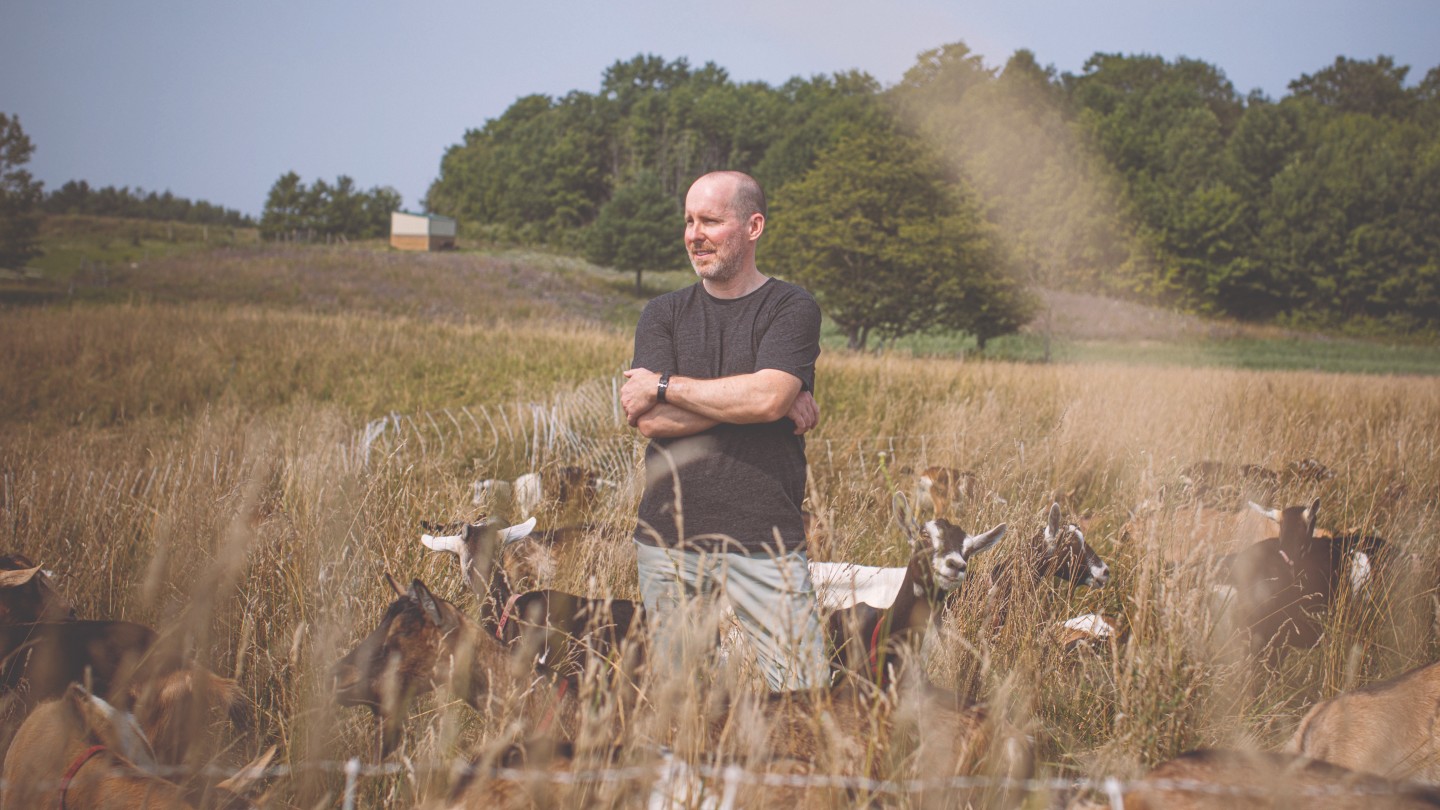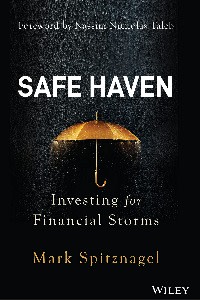Against the herd: trader Mark Spitznagel on contrarian investing

Roula Khalaf, Editor of the FT, selects her favourite stories in this weekly newsletter.
When the coronavirus pandemic sent financial markets tumbling in March last year, fund manager Mark Spitznagel had one of his most profitable periods ever. His Miami-based Universa Investments, which trades options and aims to make “explosive” returns in times of market crisis, posted hefty profits as the S&P 500 index dropped 20 per cent in the first quarter of 2020.
Such returns do not come along every day, even for Spitznagel, an outspoken trader who enjoys being the contrarian. His strategy involves suffering small losses for long periods when markets are buoyant, then making huge returns during very occasional market blow-ups. That, he points out, is almost the mirror image of what most investors are taught to do: make steady gains most of the time but accept the odd huge loss. “When someone wants to bet against a crash, I will take the other side,” he says. “I can’t have everyone agree with me. I need to be the contrarian, crazy guy that everyone sniggers at.
Dressed in a navy blue polo shirt, Spitznagel, is speaking to the FT by video link from a formal-looking, white-panelled room in his 100-year-old log house on the shores of Lake Michigan. It is one of two homes he owns in Michigan state; the other, a farm with 400 goats that produces award-winning cheese, is a short drive away.
Safe Haven, his book that has just been published, further demonstrates his delight in thinking differently to most other investors. Drawing on logic, probability theory and history, it aims to justify his investment theory and show that most perceived havens investors run to — be they bonds, hedge funds or tail-risk funds — do not work.
He also expresses his disdain for most forms of investing, so much of which he says is “storytelling, empty narrative”. There are “frighteningly many ways that the investment industry regularly smokes people with complicated and unfalsifiable (and thus pseudoscientific) theories and cherry-picked market data”, he says in the book.
Spitznagel’s longtime friend and colleague Nassim Nicholas Taleb, author of The Black Swan: The Impact of the Highly Improbable, puts it more bluntly. “This is [Spitznagel’s] monumental ‘f*** you’ to the investment industry,” he writes in the foreword to Safe Haven.
Spitznagel started out in finance at 16, as a clerk for traders who cleared their business through the firm of Everett Klipp. A second world war veteran and family friend, Klipp was a legendary trader on the Chicago Board of Trade and a mentor to young traders. He trained Spitznagel as a teenager, then more formally after he graduated from college and began trading in the bond-futures pit.
Spitznagel recalls eagerly reading research and presenting his findings to Klipp. “He’d laugh and say none of it matters,” says Spitznagel. Rather than trying to forecast the future, the key was the ability to take small losses and move on, and not get wiped out by a big market move. That helped Spitznagel develop a philosophy of accepting small losses for a long period in the hope of bigger gains ahead.
Another key encounter came in 1999 at New York University’s Courant Institute of Mathematical Sciences, where Spitznagel met Taleb, then an adjunct professor. Quickly forming a friendship, the pair drew up plans to start a hedge fund, Empirica, which ran until 2005. Spitznagel describes the experience as “us figuring it out, beta testing”.
Spitznagel went on to join Morgan Stanley as a trader for a little over a year before deciding to launch Universa in Santa Monica, California, in 2007. The timing could not have been better. As the global financial crisis hit, Universa made 115 per cent in 2008 — while the S&P 500 lost 38.5 per cent and hedge funds fell 19 per cent. Funds designed to protect against so-called tail events became the height of fashion. Spitznagel bought a mansion in Bel-Air, complete with its own moat, from the singer Jennifer Lopez.
“At no time were we a more contrarian strategy than in 2007,” he says. “You could see a lot of complacency. No one [today] has the audacity to question whether the market can fall more than 10 per cent. [In 2007,] we were acutely having to make that case.”
In 2014, Universa moved to low-tax Florida and Spitznagel commuted from Michigan on a weekly basis. Now providing hedges for close to $11bn in client assets, his strategy appears to have paid off over the long term. Returns calculated by EY, the consultancy, show his fund made average annual returns between the start of 2008 and the end of 2019 of 105.2 per cent. However, these returns are based on gains from the hedges themselves, rather than the wider portfolio they are protecting, and therefore are hard to compare with the performance of funds in other sectors.
While his strategy is designed to hedge against a market fall, Spitznagel is keen to distance himself from the $3.8tn hedge fund industry, which he says does not hedge and is expensive. “The term ‘hedge fund’ is a complete misnomer. I can’t give you a reason the hedge fund industry should exist,” he says. “What hedge funds have going for them is that they lose less in a crash and make less [in normal markets]. It just makes people poorer.” Another popular haven, bonds, provide only “low returns in a crash” and investors have “to put a lot” in their portfolios, he adds. “For the rest of the time, the underperformance is costly.”
But Spitznagel reserves special ire for the “tail-risk” funds that, along with Universa, became sought after in the wake of the financial crisis, for their perceived ability to protect against market shocks. The strategy, which involves buying expensive put options on stocks, is down 40 per cent since December 2007, according to the CBOE Eurekahedge Tail Risk Hedge Fund index. “It’s garbage. They’re building a portfolio I would short [bet against],” he says. “The cure should not be worse than the disease.”
He is guarded about the secrets behind his own fund’s returns. However, a person familiar with the strategy said Universa believes its size can allow it to act like a market-maker, meaning it can buy options more cheaply, and that it is better than rivals at matching hedges to clients’ needs.
So what does he make of today’s markets, with the S&P 500 not far off its record high in spite of the economic damage from the pandemic? “It’s a terrible time for equity investing. It’s the worst time for this generation,” he says.

Market valuations make things difficult for investors. Valuations may point to low returns in future, but that does not mean markets rise and then simply plateau for several years, he argues. More likely is that markets rise and then fall sharply, for instance. On the other hand, an investor who “thinks they can hide in the weeds” and stay out of the market may eventually be forced to buy stocks to avoid missing out. That could ultimately also prove painful.
As to where markets go from here, Spitznagel, following Klipp’s teaching, is wary of making predictions. Unlike many hedge fund managers, he claims no special foresight in spotting the onset of the coronavirus pandemic. But he does point to signs of investor over-exuberance. “It’s very, very similar” to 2007, he says, although credit spreads and equity and bond valuations “are far more stretched today; NFTs [non-fungible tokens for digital assets] would have been laughed away in 2007”.
Much of the blame, he says, can be heaped squarely on central banks, which “are acting like it’s an emergency, despite [asset] valuations”. Spitznagel points to the rescue in the late 1980s of Continental Illinois National Bank, which he says was the start of the “too big to fail” policy. The idea that the US Federal Reserve would provide a backstop against crises “let more and more irresponsibility happen”, he says. “Investing is no longer about having to think about systemic risks in that way.”
He is careful not to say when a crash might happen, but insists there must come a time “when you can’t take on more debt”. He adds: “It’s a very strong view I have. What has happened in the past decades is . . . laying the groundwork for the next crash.”
‘Safe Haven: Investing for Financial Storms’ is published by Wiley (£21.99/$27.95)
This article is part of FT Wealth, a section providing in-depth coverage of philanthropy, entrepreneurs, family offices, as well as alternative and impact investment
Comments